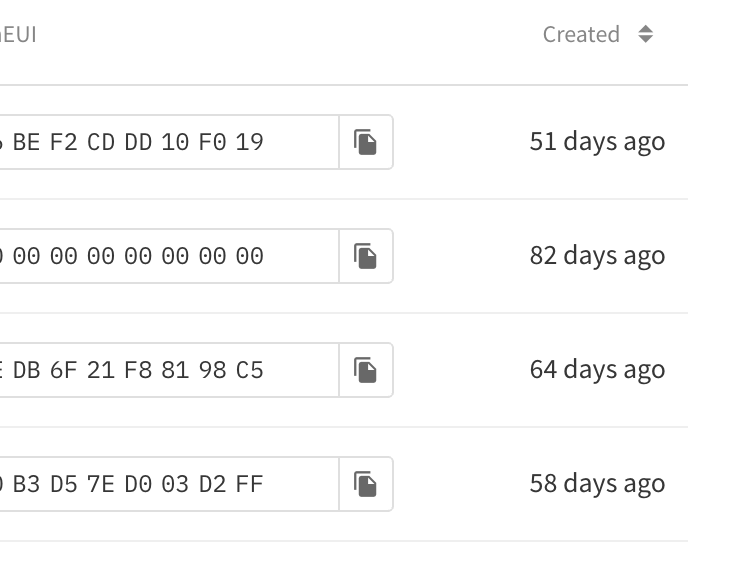Hey everyone! Thanks so much for all of your feedback. Threads like these are very valuable to us and I can assure you that we have been reading along very carefully and take this criticism and feedback very seriously.
EDIT: For any TTI core team members who read this thread remember:
- We are not beating up on you!
- We are not the enemy but are here to help and trying to make TTN/TTS/TTI better for all!
- This is to be a mechanism for reasoned positive contributions and explainations for why something might be wrong or open for improvement - not (just) to dump on you guys

Of course, this is understood as such and it makes me worried that apparently, we might have given the impression to frown feedback in the past (?).
I cannot comment on all points but can give more of a general response to the discussion so far.
Regarding device onboarding
We are aware of the UX issues with onboarding new devices and as a result already added the onboarding via the Device Repository. The coverage of the DR is already quite impressive but still far from complete. We’re confident though that it will further improve over the next months. The DR is however only one effort we took to improve the flow. We are also working on improving the manual device onboarding, which will shrink it down to a single form that is aimed to accommodate new users while still offering the flexibility to tackle advanced use cases as well (side note: this trade-off is basically the one defining challenge of the v3 Console). You can see the plan for this new onboarding form in this issue which also includes a wireframe that I designed in line with direct feedback that I got from V3 users.
It is currently actively being worked on the implementation and I expect this to land in the following weeks.
One thing to keep in mind with regards to v2 is that TTS supports significantly more end device functionality than v2 did, mainly due to the fact that almost all LoRaWAN specifications and device classes are now supported. With all this added functionality, configurability, and added use cases, it is not possible to keep the end device onboarding as straightforward as it was for v2. Our strategy here is to use sane defaults and also “canned solutions” (Device Repository) and contextual tooltips and hiding advanced settings initially. All of this will help to make the added complexity more digestible. Let me assure you that designing such form that covers all use-cases (ABP, OTAA, Multicast, LW versions, RPs, MAC settings, device class capabilities, external join servers, etc etc) but still stays simple enough for everyday use is not trivial which is also the reason why this is taking so long, but we’re getting there!
Regarding payload formatters
The relationship between end device and application level payload formatters is currently not clear enough. The biggest takeaway is that end device level formatters (exist and) take precedence. We have already tried to improve the communication around that fact in the Console, but there’s still room for improvement and a concept like device profiles is in consideration. I’ll take another look at that with the feedback from this thread.
Regarding event views
We are also aware of the current verbosity of the event stream in the Console. The reason this has not been fixed yet is that there are a variety of issues with the current event mechanic both technical and UX-wise, which need to be addressed holistically rather than by patchworking. You can see an overview on this in this issue.
Given the significance of this feature, we will reconsider adding some quick provisional mitigations that will make life easier for you in the short term.
Some direct comments
Not sure if I got this correctly, but the device overview will show a “Last seen” value. For this to be shown the device needs to have had an active session.
Within uplink events raw data, you should see in data.uplink_message.rx_metadata which gateways picked up the signal.
We had to start somewhere rather than delaying this further. New tooltips are coming up very soon.
Rest assured, we do ;). For many of the issues discussed here, we are already in the process of fixing or at least aware of and working on planning fixes. We’re a small team for the Console, doing everything from UX to implementation and also many issues are not as easily fixed as it might seem on first glance. This can sometimes mean that things are lying dormant for a while but we definitely track them and a thread like this will make sure we get the prioritization right.
Our action points to sum up:
I will make sure that we align our internal prioritization based on the feedback of this thread.
Once again: thanks to everybody for this valuable and constructive feedback. Please do not hesitate to word any other concerns or issues that you have with regards to the Console and also feel welcome to file issues in the TTS repository directly, or to search for existing issues and giving a thumb-up which also helps us with prioritizing.
![]()
